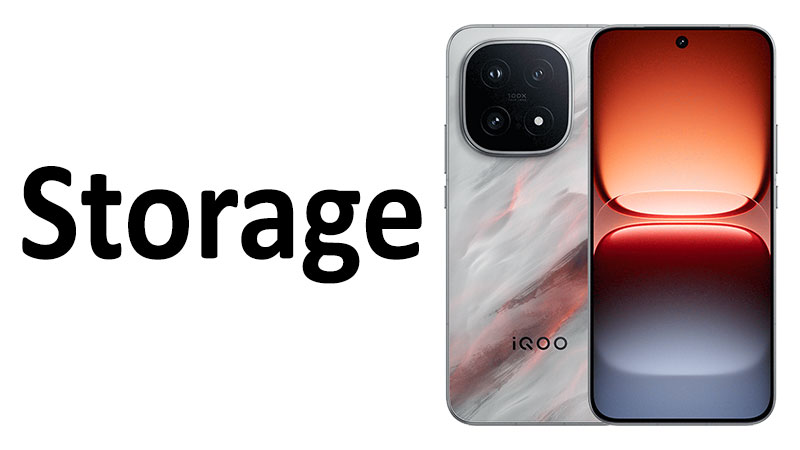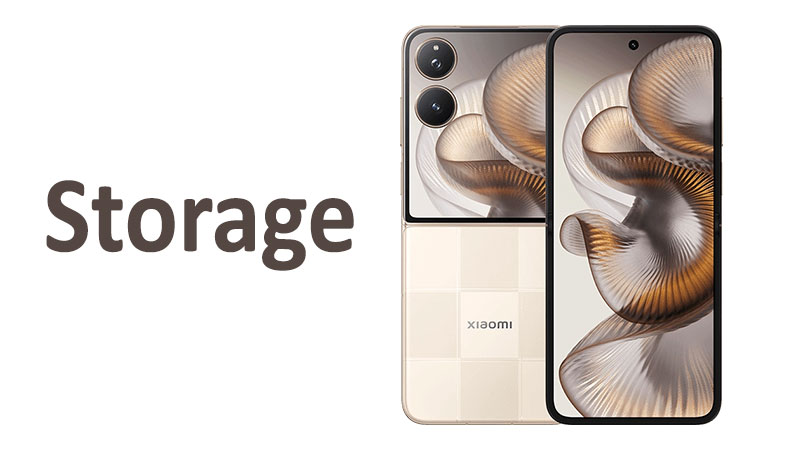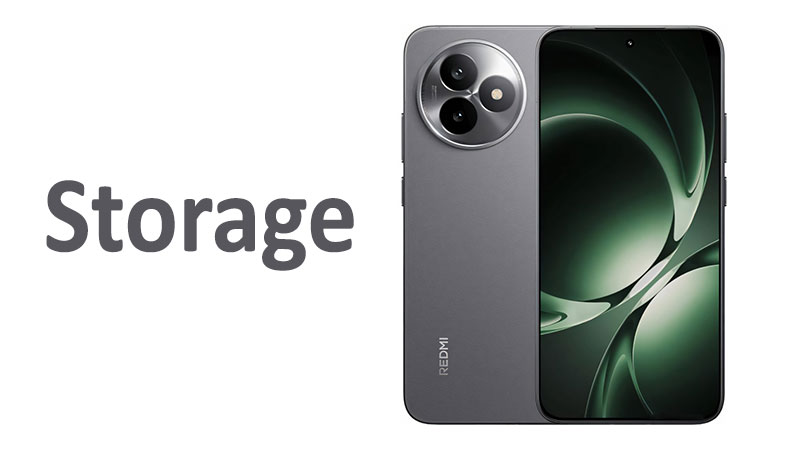The vivo iQOO 15 storage configuration is a crucial element of this flagship smartphone. It dictates the device’s overall speed, responsiveness, and user experience. Understanding the capacity options and the underlying technology is vital before purchasing this powerful handset. This detailed guide covers everything from the ultrafast UFS 4.1 standard to the various RAM and storage configurations available to consumers. We explore the specialized features and provide a thorough buyer’s guide. Therefore, this resource will help you make a fully informed decision about your next smartphone investment.
The Foundation: UFS 4.1 Storage Technology
Storage speed is just as important as the processor in modern smartphones. The vivo iQOO 15 utilizes Universal Flash Storage (UFS) 4.1. This is the latest and fastest mass storage standard available today. This advanced technology delivers blazing-fast data transfer rates. Consequently, it significantly reduces loading times for applications and games. UFS 4.1 is a major step forward for mobile performance.
What is UFS 4.1? The Technical Edge
UFS 4.1 is an evolution of the UFS standard. It uses advanced NAND flash memory. This memory is packaged with a high-speed controller interface. The standard operates on a dual-lane high-speed interface. This enables incredible theoretical bandwidth. Furthermore, the storage is designed for efficiency. This means it consumes less power than older standards. This improved efficiency benefits the phone’s battery life.
The Speed Advantage: Sequential Read and Write
The core benefit of UFS 4.1 is its sheer speed. Sequential read speeds can surpass 4,200 MB/s. Sequential write speeds can exceed 2,800 MB/s. These figures represent a massive performance jump. Users will immediately notice this speed when moving large files. It also becomes apparent when installing high-demand applications.
This rapid transfer speed is essential for recording high-resolution video. Recording 8K video requires constant, sustained write performance. UFS 4.1 ensures smooth, uninterrupted capture. Therefore, dropped frames and buffering become issues of the past. The system handles massive data streams with ease.
Power Efficiency of UFS 4.1
The performance boost does not come at the expense of battery life. UFS 4.1 uses a low-power design. It operates at a voltage of 2.5V. This is lower than previous UFS standards. The lower voltage means less heat generation and greater energy savings. This is critical for high-performance mobile devices. Better power management allows the battery to last longer during intensive tasks. Examples of intensive tasks include gaming or video editing.
The architecture allows for faster entry into deep sleep states. It also enables quick wake-up times. This optimized power cycling contributes to better standby time. Thus, the vivo iQOO 15 is both powerful and energy conscious. The underlying storage technology plays a key role in this balance.
UFS 4.1 vs. UFS 4.0: A Specialized Comparison
UFS 4.1 is primarily an optimized version of UFS 4.0. It refines the feature set and stability. While the maximum theoretical bandwidth remains largely the same, UFS 4.1 introduces key software and firmware improvements. These improvements enhance sustained performance under heavy load. This is vital for flagship phones.
Furthermore, 4.1 often includes better thermal management features. The system maintains peak speeds for longer durations. This prevents performance throttling during extended gaming sessions. UFS 4.0 was already incredibly fast. The 4.1 iteration focuses on consistency and endurance.
UFS 4.1 vs. UFS 3.1: Why the Upgrade Matters
The difference between UFS 4.1 and UFS 3.1 is profound. UFS 3.1 offered peak sequential read speeds of about 2,100 MB/s. This is approximately half the speed of UFS 4.1. The jump is truly generational. Random read and write speeds also see significant improvements.
Random read/write is crucial for daily tasks. It affects app opening times and system responsiveness. Moving from 3.1 to 4.1 means apps launch instantly. The entire operating system feels snappier. This upgrade is perhaps the single biggest performance differentiator for the vivo iQOO 15. Previous iQOO models that used UFS 3.1 simply cannot match this velocity.
Analyzing vivo iQOO 15 Storage Capacity Options
The vivo iQOO 15 offers generous storage capacity options. Buyers can choose from three main tiers. These tiers are 256GB, 512GB, and a massive 1TB. Each capacity caters to a specific user profile and need. Careful consideration of these options is necessary. This choice impacts both cost and long-term usability.
The Base Tier: 256GB Capacity
The entry-level model offers 256GB of storage. For many users, this capacity is more than sufficient. It easily accommodates hundreds of apps and thousands of photos. Users who rely heavily on cloud storage will find this ideal. It is the most budget-friendly option in the lineup.
However, modern games are becoming huge. Many titles now require 20GB or more of space. Furthermore, a system partition also takes up a chunk of the storage. For avid mobile gamers, 256GB might quickly feel restrictive. Buyers need to assess their media consumption habits realistically.
The Mid-Range Sweet Spot: 512GB Capacity
The 512GB option represents the ideal balance. It offers substantial space for almost any user. Gamers can install numerous large titles without worry. Content creators can store several hours of 4K video footage. This capacity provides peace of mind for the average buyer.
This configuration is highly recommended for most power users. It provides ample room for growth. You do not need to constantly manage files or delete old data. The added cost over the 256GB model is often justified. The 512GB storage ensures future-proofing for the device.
The Ultimate Tier: 1TB Capacity
The 1TB capacity is reserved for the most demanding users. This massive storage is a professional-grade feature. It targets dedicated mobile videographers and multimedia specialists. Users who shoot large volumes of 8K video will appreciate this size. It is also perfect for those who require an entire offline media library.
Choosing 1TB essentially means you never have to worry about space. This capacity removes all storage limitations. However, it also comes with the highest price tag. The 1TB model is the definition of absolute maximum capacity. It ensures the vivo iQOO 15 remains relevant for many years to come.
Storage Capacity and Digital Lifestyle
Your choice of storage should reflect your digital life. A light user mainly streams content and uses social media. They can choose the 256GB model confidently. A moderate user downloads movies and plays a few games. They will be happy with the 512GB option.
Heavy users and creators need the 1TB version. They constantly generate or consume massive files. This choice is a long-term investment. Remember that the vivo iQOO 15 does not support external microSD card expansion. Therefore, the internal storage cannot be increased later. You must choose wisely at the point of purchase.
RAM and Storage Synergy: The Configuration Matrix
The performance of the vivo iQOO 15 is not determined by storage alone. Random Access Memory (RAM) works closely with the storage system. RAM handles active applications and multitasking. The iQOO 15 offers powerful RAM configurations. These configurations are paired strategically with the storage options. This creates a high-performance matrix.
Decoding the Configurations
The vivo iQOO 15 is available in five primary configurations:
- 256GB storage paired with 12GB RAM
- 256GB storage paired with 16GB RAM
- 512GB storage paired with 12GB RAM
- 512GB storage paired with 16GB RAM
- 1TB storage paired with 16GB RAM
These combinations are designed to offer maximum flexibility. They allow users to tailor performance and capacity to their budget. The 16GB RAM options cater to the ultimate power users. The 12GB RAM options offer excellent performance at a lower cost.
RAM vs. Storage: Understanding the Difference
Storage capacity is the long-term holding space for data. This includes your operating system, apps, and files. RAM, conversely, is the short-term working memory. The CPU uses RAM to run currently open applications. When you switch between apps, the data is held in RAM. More RAM allows the phone to keep more apps open simultaneously.
When the RAM is full, the phone must reload apps from the fast UFS 4.1 storage. High RAM minimizes this reloading process. This results in a much smoother multitasking experience. The combination of ample RAM and UFS 4.1 speed ensures seamless operation.
Performance Analysis: 12GB RAM vs. 16GB RAM
Both 12GB and 16GB of RAM offer exceptional performance. For most everyday tasks, 12GB is more than enough. It handles numerous social media apps and standard productivity tools. The vast majority of users will find 12GB to be highly responsive.
However, 16GB of RAM is the professional standard. It is beneficial for extremely heavy multitasking. This includes running multiple high-demand apps in split-screen mode. It also supports virtual desktop environments or background processes. The performance boost is mainly felt when running five or more demanding applications at once. Therefore, the 16GB option is an important upgrade for power users.
The Best Configuration for Mobile Gaming
Mobile gaming demands high RAM and fast storage access. The combination of 16GB RAM and UFS 4.1 is ideal for gaming. The 16GB RAM ensures the game stays loaded in memory. This eliminates texture pop-in or stuttering. The UFS 4.1 speed enables lightning-fast level loading times.
The 512GB 16GB RAM configuration is often the sweet spot for gamers. It provides both the necessary speed and substantial storage for large game libraries. The absolute best configuration is the 1TB 16GB RAM model. This model offers the ultimate zero-compromise gaming experience.
The Best Configuration for Productivity and Multitasking
For users focused on productivity, the 512GB 16GB RAM model shines. This setup provides maximum efficiency. It allows for seamless switching between apps like video editors and design suites. The fast storage allows large project files to load rapidly. This minimizes wasted time waiting for resources.
If your workflow involves constantly switching between dozens of browser tabs and heavy applications, 16GB is superior. It ensures background processes do not interfere with foreground performance. Choosing a lower RAM configuration, like 12GB, is still excellent. However, 16GB provides that extra margin of responsiveness for intense workdays.
Specialized Comparisons and Buyer’s Guide
Analyzing the vivo iQOO 15 storage in isolation is incomplete. We must place its capabilities within the context of the larger smartphone market. Comparing it to previous models and key competitors is essential. This specialized review will highlight the iQOO 15’s key advantages. It also prepares the buyer with crucial knowledge.
vivo iQOO 15 vs. Previous iQOO Models
The iQOO series is known for pushing performance boundaries. Previous models, like the iQOO 13, often utilized UFS 4.0 or UFS 3.1. The jump to UFS 4.1 in the iQOO 15 is substantial. This change represents a significant boost in read and write performance. Older models will feel noticeably slower when installing new games. They will also feel slower when transferring high-definition video.
Moreover, the iQOO 15 introduces the 1TB storage option. Earlier generations usually capped out at 512GB. The new 1TB capacity addresses the growing need for internal storage. This is particularly true as 8K video recording becomes more common. The iQOO 15 firmly sets a new performance benchmark for the brand.
Comparing Storage with Flagship Competitors
The iQOO 15 directly competes with other Android flagships. These include devices from Samsung and Xiaomi. Many competitors also use UFS 4.0 or 4.1. The crucial difference often lies in the optimization. vivo’s FunTouch OS (or OriginOS) is highly tuned. It is designed to take full advantage of the UFS 4.1 speed.
Furthermore, the availability of 1TB capacity is a competitive edge. Not all competing flagships offer this massive size. The iQOO 15’s aggressive RAM/Storage pairing also stands out. The 16GB RAM combined with 1TB of UFS 4.1 storage is a powerhouse combination. This is difficult for many rivals to match in terms of raw specifications.
Pros and Cons of the iQOO 15 Storage Subsystem
Every system has its strengths and weaknesses. It is important to look at the storage subsystem objectively. A balanced perspective helps buyers make the right decision. We list the main advantages and potential drawbacks here.
Pros:
The use of UFS 4.1 technology delivers industry-leading read and write speeds. This makes the phone exceptionally fast in daily use. The 1TB storage option provides unmatched internal capacity. This meets the needs of professional content creators and power users. Available 16GB RAM options guarantee superior multitasking performance. This ensures smooth operation under the heaviest loads. UFS 4.1 is power efficient. It contributes positively to the overall battery life of the device. The base 256GB storage is generous for an entry-level flagship. This offers good value for the cost.
Cons:
The phone lacks a microSD card slot for storage expansion. Buyers must commit to their chosen capacity at purchase. The high-end 1TB configuration carries a significant price premium. This might place it outside the budget for many consumers. The performance difference between 12GB and 16GB RAM may be negligible for average users. This means the 16GB upgrade is not essential for everyone.
Important Points Buyers Must Know
Potential buyers should keep several key facts in mind. These points relate directly to the storage and performance of the vivo iQOO 15. Understanding them will prevent buyer’s remorse.
First, the storage capacity you choose is final. There is no possibility to add a memory card later. Therefore, always choose a size slightly larger than you currently need. Future proofing is essential with non-expandable storage.
Second, the system partition takes up space. A portion of the capacity is reserved for the operating system and recovery partitions. A 256GB model will have less than 256GB available to the user. This is a common practice, but important to remember.
Third, the speed is guaranteed. The UFS 4.1 standard ensures a consistent, high-speed experience across all configurations. Whether you buy the 256GB or the 1TB model, the underlying storage technology is the fastest available.
Finally, consider the RAM-storage pairing carefully. A user with 1TB of storage but only 12GB of RAM is optimized for media storage. A user with 256GB of storage and 16GB of RAM is optimized for application speed and multitasking. Your specific use case should drive the configuration choice.
Making Your Choice: A Storage Buyer’s Guide
Selecting the right vivo iQOO 15 configuration depends on three factors. These factors are your budget, your usage habits, and your desire for future-proofing.
If you are a light to moderate user, choose the 256GB 12GB RAM configuration. This is the most cost-effective option. It provides fast performance and enough space for standard use.
If you are an avid mobile gamer or a high-volume downloader, select the 512GB 16GB RAM configuration. This option provides the ideal balance of large capacity and maximum operating speed. It is the best all-around investment for the vast majority of power users.
If you are a professional content creator, opt for the 1TB 16GB RAM configuration. This choice eliminates all concerns regarding space and multitasking performance. It guarantees that the vivo iQOO 15 can handle any task thrown at it. This is the ultimate, no-compromise option available. Evaluate your needs honestly. This will lead you to the perfect iQOO 15 variant.
Conclusion
The vivo iQOO 15 storage system is a masterpiece of modern mobile engineering. Its adoption of the UFS 4.1 standard provides exceptional data transfer speeds. This ensures near-instantaneous app loading and file handling. It represents a generational leap over previous storage technologies. This speed advantage makes the iQOO 15 one of the fastest phones on the market.
Buyers have several compelling choices in capacity. The options range from a solid 256GB up to an unprecedented 1TB. Furthermore, the flexible RAM options, including 12GB and 16GB, allow for fine-tuning performance. The 16GB RAM models are particularly attractive for heavy multitaskers and dedicated gamers.
While the lack of microSD expansion requires careful purchase planning, the immense internal capacity largely mitigates this issue. The overall storage architecture is robust, efficient, and exceptionally fast. The vivo iQOO 15 offers a configuration to suit every need and budget. Therefore, selecting the correct pairing of RAM and storage is the final step in acquiring this high-performance device. This guide provides all the necessary information to confidently make that informed choice.
FAQ
Is UFS 4.1 significantly faster than UFS 3.1?
Yes, UFS 4.1 is about twice as fast as UFS 3.1. It offers dramatically higher sequential read and write speeds.
Can I add a memory card to the vivo iQOO 15?
No, the vivo iQOO 15 does not support external storage expansion. You cannot add a microSD card to the device.
Which vivo iQOO 15 storage capacity is best for gaming?
The 512GB or 1TB models are best for gaming. Modern games require significant installation space.
What is the advantage of 16GB RAM over 12GB RAM?
16GB RAM allows the phone to handle more applications open in the background simultaneously. It is ideal for extreme multitasking.
Does the storage type affect battery life?
Yes, UFS 4.1 is more power-efficient than older standards. It helps conserve battery life during data access.



